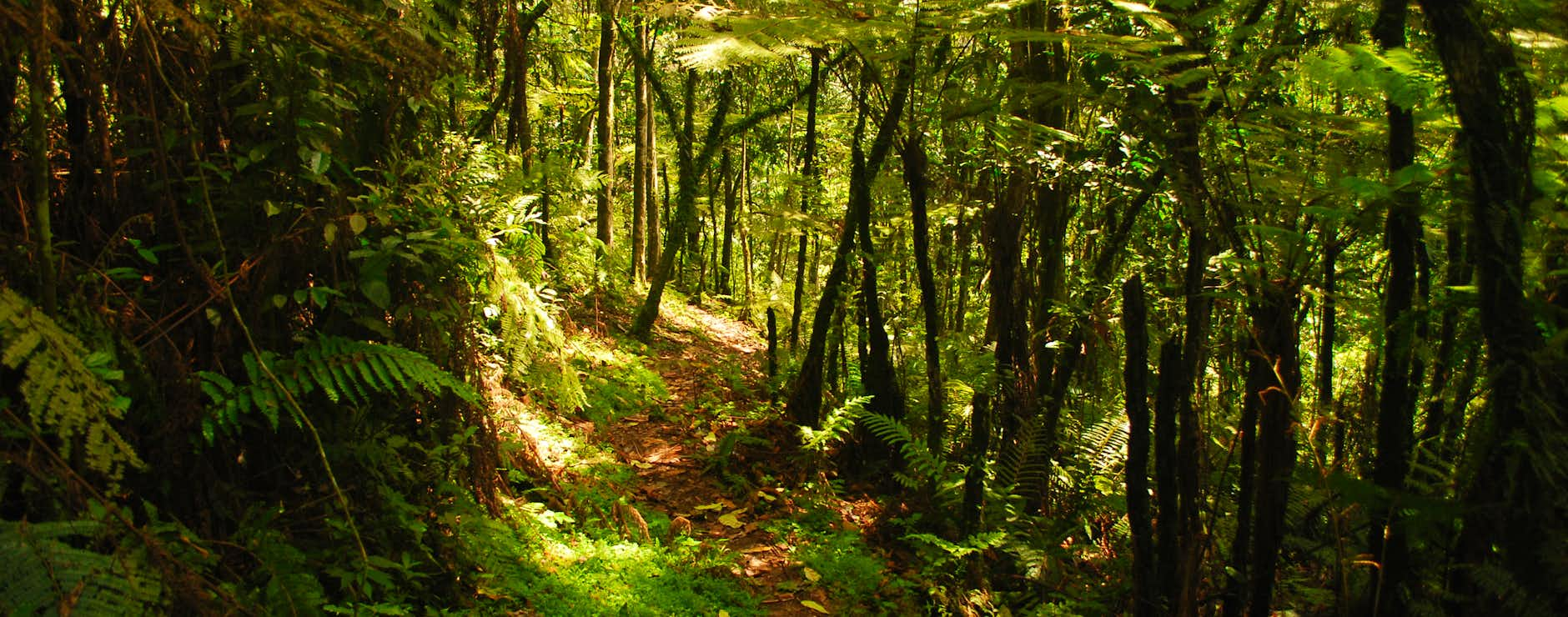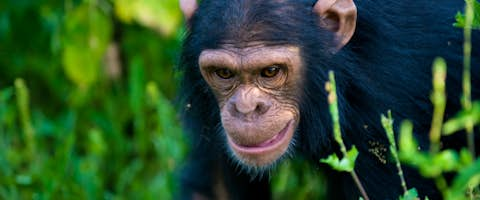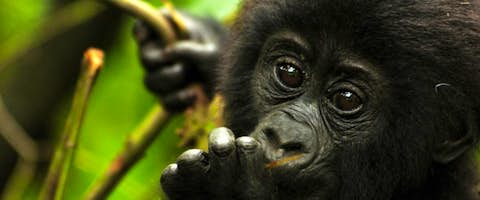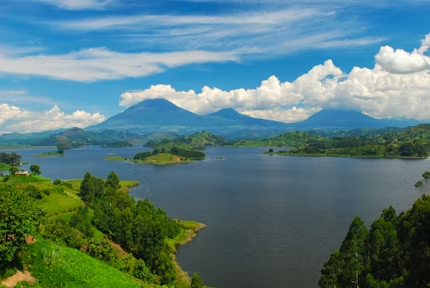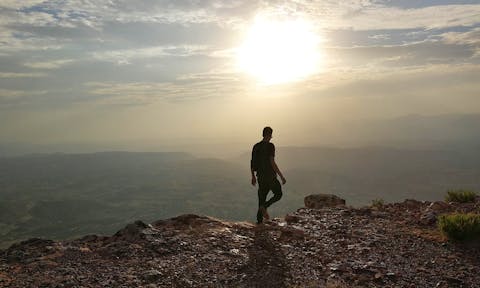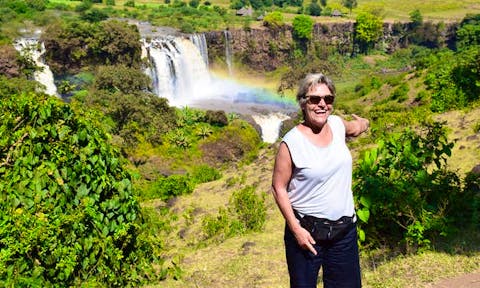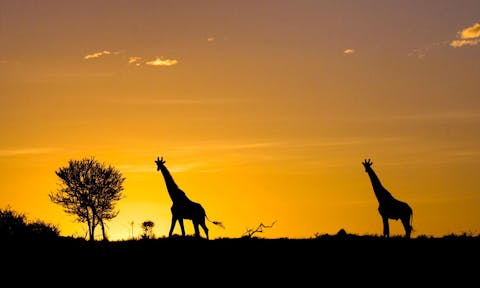What does a typical day gorilla trekking look like?
Bwindi Impenetrable National Park is the most popular destination in the world for gorilla trekking. There are a number of lodges around Bwindi Impenetrable National Park that serve as great bases for gorilla trekking. If you're including gorilla trekking as part of a wider itinerary, chances are you'll drive down from one of the other wonders on the south-west circuit (most probably Queen Elizabeth National Park).
You'll arrive in the afternoon, and will spend the rest of the day at leisure around the lodge, in anticipation for the big day to follow.
The next day, you’ll be greeted by a guide, who will assign you a group to trek with. This will largely depend on your fitness ability, if you want to see a specific gorilla family, and if you want to stay with the people you arrived with.
Once you’re assigned your group, your guide will explain the rules to you that you need to follow, before entering the forest in search of the gorillas.
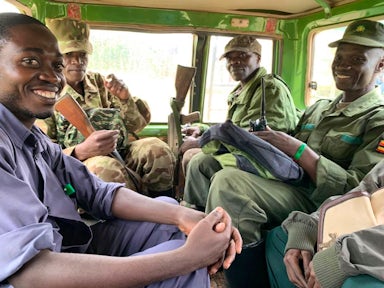
You will join researchers and rangers
How can I book a tour?
This is where we can help. Tours can range from a day trekking in Bwindi Impenetrable National Park, to a 4-day gorilla trekking fly-in safari. You can even do two gorilla treks to visit different families, and include a gorilla habituation experience.
By talking to us, we can help you decide what you might like to do, and create a tailor-made tour for you.

Visiting the Gorillas involves trekking through thick forests at Bwindi.
Popular Gorilla Tours
The tours below showcase just some of what is possible. In Uganda, nothing is set in stone. Use these itineraries as starting points, or to draw inspiration. Then get in touch, and let our expert team help craft the perfect itinerary for you.
How much will it cost me?
Prices vary depending on what you’d like to do, the shape of your final itinerary, the number of people you are travelling with, and your accommodation choices. We will work with you to create an itinerary that works for your budget.
To go gorilla trekking, you will need to obtain a permit, which costs $700 at time of writing.
Gorilla trekking is very popular, and permits sell out well in advance. We recommend you purchase one at least 5 months in advance of your trip.
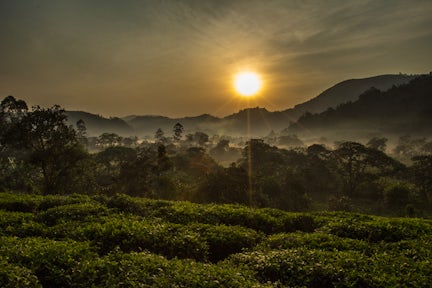
What else can I do while in Bwindi?
Batwa Experience
There’s plenty you can do after you’ve finished your trek in Bwindi.
If you are after something authentic, that connects you to the culture, we recommend the Batwa Experience.
The Batwa people, also known as pygmies, were the first to live in the forest. However, in 1992, they were asked to leave once the forest became a national park.
Very quickly the tribe was in a fight for survival.
In 2001, two American medical missionaries, Dr Scott and Carol Kellermann purchased land and established programs to help protect and improve the lives of the Batwa people.
These projects are now managed by the Batwa Development Program. On your tour, you will have a Batwa guide. You’ll be shown traditional dances, singing, and storytelling.
It’ll begin with a nature walk, which can take up to 5 hours. During this time, you’ll see their thatched houses, learn hunting techniques with a bow and arrow, and pick herbal medicine from the roots.
The whole experience will conclude with a meal with the locals.
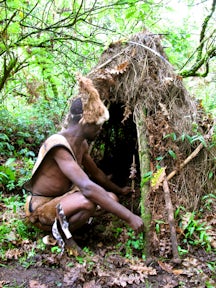
Coffee Tours
If long walks aren’t your thing, then engage your taste buds with a wonderful coffee safari at Kingha Coffee.
It’s a company that was founded in 2015 and has a strong relationship with the community. They only hire local employees.
During your time here, you’ll learn what it takes to make a fantastic cup of coffee, which involves roasting your own, over an open fire.
You can also stroll down to a river, and pick the cherries straight from the trees en route. All proceeds support the local coffee farmers.
Kingha Coffee encourages schools to attend every week, so they can run an agricultural education program.

Bwindi Gorilla Tours
Destinations to combine with gorilla trekking in Uganda
Murchison Falls National Park
Murchison Falls National Park is based in north-western Uganda and is managed by the Uganda Wildlife Authority.
It was first explored by John Speke and James Grants in 1862, and is the largest national park in Uganda.
In the park, you’ll find Murchison Falls. Water from the Nile plunges over 43 metres, through a gap of 7 metres.
This park is home to Uganda’s largest population of Nile crocodiles, as well as 450 species of birds, and 250 giraffes.
Since 2005, this park is a lion conservation unit.
Queen Elizabeth National Park
Queen Elizabeth National Park is the most popular savanna park in Uganda and the best place to spot tree-climbing lions.
There are only 2 populations of lions that climb trees, and one of them can be found within the Ishasha sector of the park.
People debate why the lions climb trees, some think it’s to protect themselves from the biting tsetse flies, others think it’s to escape the heat.
Rwenzori Mountains National Park
Rwenzori Mountains National Park is located in south-western Uganda and was established in 1991.
It’s at the base of the Rwenzori Mountains, known as the Mountains of the Moon, by Claudius Ptolemy, a Greco-Roman mathematician, astronomer, and geographer. He named them this, as they’re permanently snow-capped.
The mountains were formed around 3 million years ago, due to the uplifting of crystalline rocks.
The highest peak reaches an impressive 5,109 metres.
This park is known for its varying climate, from tropical rainforest weather to snow.
Kibale Forest National Park
Kibale Forest National Park is based in the western part of Uganda.
It’s known for having the biggest population of endangered monkeys, including 1,450 chimpanzees.
Other animals live at this park, such as buffalo, leopards, bush pig elephants, and reptiles, but they are rarely spotted.
Chimpanzee trekking is the most popular activity at this park. It takes between 2-3 hours, and you’ll go in a group of 6 other travellers.
Alternatively, it’s a fantastic place to go on a 12km forest hike, where you’ll pass through river lined forests, swamps, and grassland.
Lake Mutanda
Lake Mutanda is a 30-minute drive from the centre of Kisoro. It’s known for being surrounded by 3 extinct volcanoes: Mount Muhabura, Mount Gahinga, and Mount Sabinyo.
You can hike all three volcanoes, and on the third peak of Mount Sabinyo, you’ll be in Rwanda, Uganda, and Congo at the same time.
As well as hiking, we recommend you explore the Garama Cave, where Echuya Batwa, commonly known as pygmies, would hide while being chased out by Bantu peoples.
You can also canoe to explore the surrounding islands, and do some mountain biking.
Lake Bunyonyi
Lake Bunyonyi is sandwiched between Kabale (53 km away) and Kisoro (48 km away), in south-western Uganda.
It’s the perfect place for keen bird spotters, as you will find over 200 species of birds.
On top of bird spotting, you can explore the 29 encircling islands, including Akampene, Bwama, and Njuyeera.
With it being one of the safest lakes in Africa, it’s the perfect place for swimming.
Popular Trips to Uganda
The tours below showcase just some of what is possible. Use these itineraries as starting points, or to draw inspiration. Then get in touch, and let our expert team help craft the perfect itinerary for you.
Thinking about visiting Uganda?
Listen
We'll spend some time listening to your aspirations, then discuss the kind of experience that might suit you.
Match
Next we'll discuss the options, shortlist the best trips for you and present you our impartial recommendations.
Reserve
We'll place a 24 hour hold on your preferred option - without obligation - whilst we talk through the details.
Get in touch and we can help you understand your options, design an itinerary that's right for you, and then get you set up and ready to go.
+1 315 645 2889

